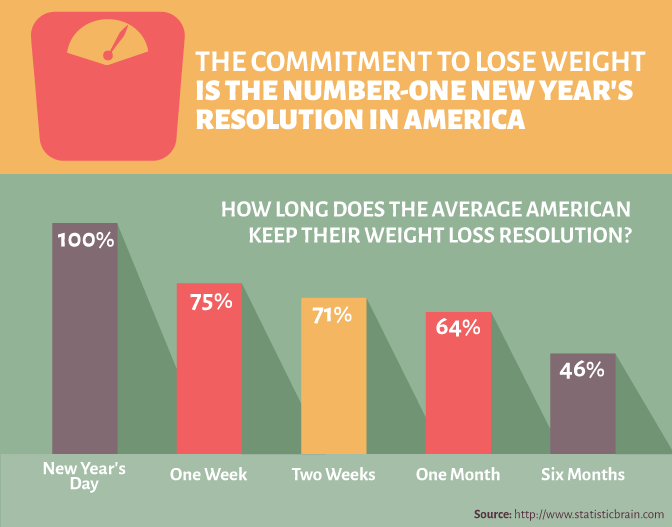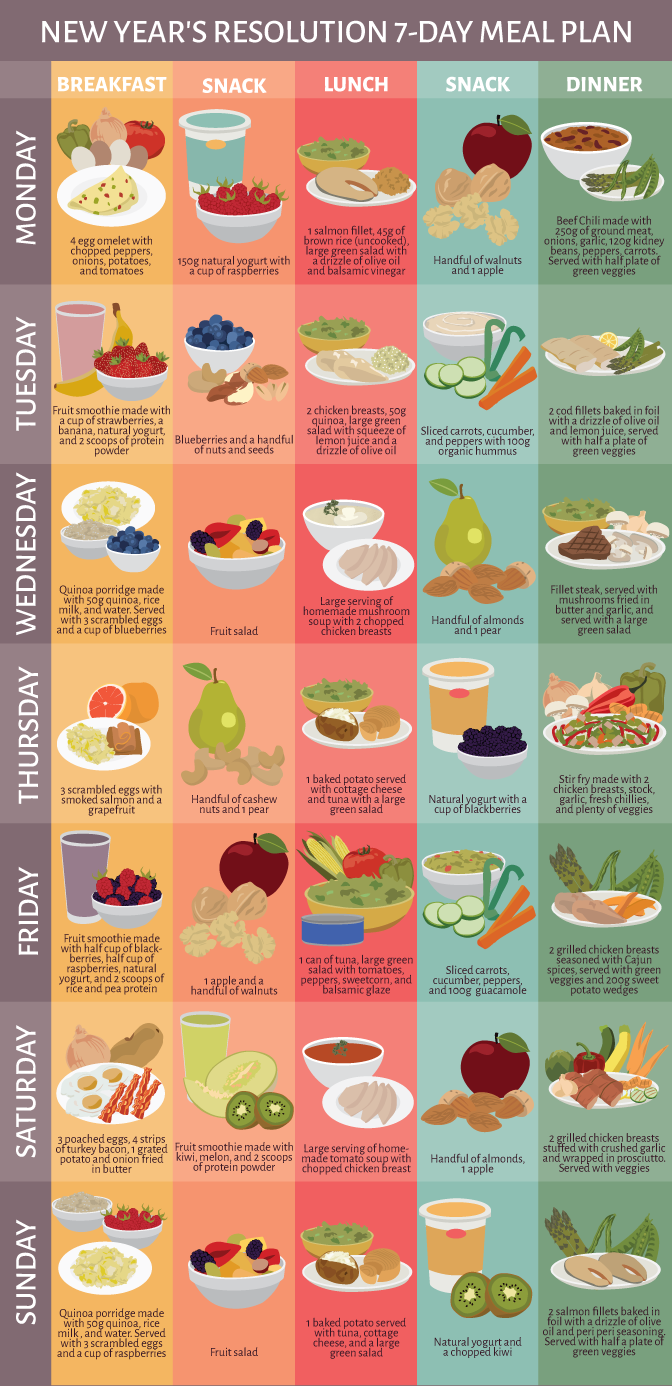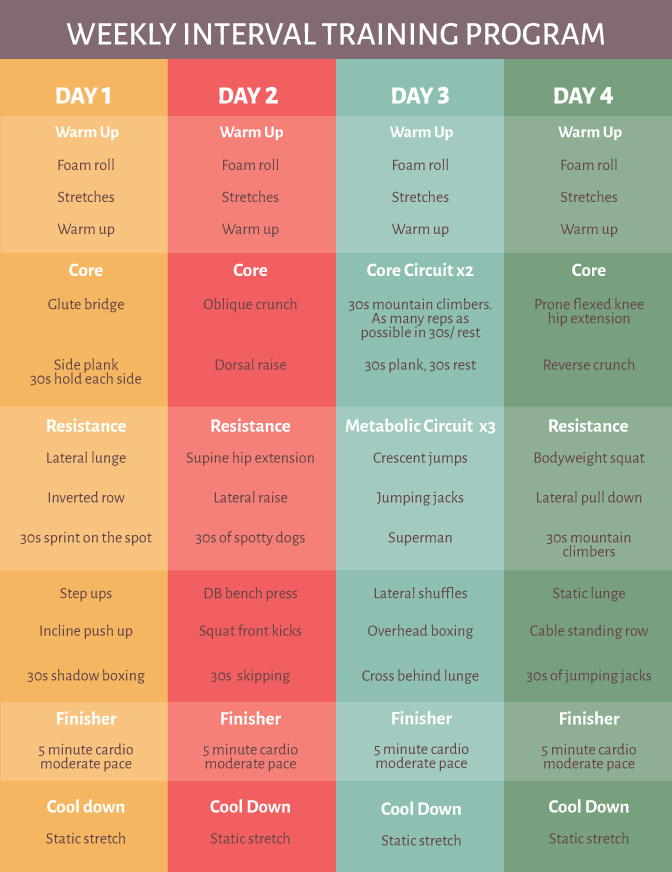Don’t Quit Now – Keep Your Health Resolutions All Year Long!
Statistics show that every year around half of the population will make a New Year’s resolution.
Losing weight tops the chart as the most popular pledge, but only 64 percent of people are still working on
their resolution after one month and a meagre 8 percent achieve success long term.http://www.statisticbrain.com/new-years-resolution-statistics/
If you’ve found yourself falling off the weight-loss bandwagon already this year, you’re certainly not alone and it’s also not
too late to make this year the year that you make a positive change in the way you look and feel about your body.
Getting your mindset, nutrition, and exercise aligned with your goals is essential for success, so below we’ve
outlined some of the most common weight loss mistakes, and effective solutions for you to work on instead.

The first common weight loss mistake is setting unrealistic goals. This is where many of us fall
short of the impossible norms that society has set for us. While it may be in vogue to be six feet tall
and a size zero, few of us are born with the physical capacity to attain that. It’s important to remember
that beauty comes in all shapes and sizes, and that our blemishes, scars, and stretch marks (both physical
and psychological) are a sign of rich experience and are way more interesting than a blank canvas. Similarly,
each of us is born with a set weight point that is healthy for our bodies, and no government statistic, nor
media campaign, nor indeed personal determination will defy our body’s own mission to keep us healthy, safe,
and as close to our set point as possible. So focus on your fitness, your muscle tone, and your well-being
when it comes to setting your goals. Focus on embracing the miracle that is your body and the fact that it
works its little socks off for you day in and day out – breathing for you, pumping your heart for you,
washing your eyes for you – even though sometimes you don’t treat it so well. And gracefully, joyfully
accept the fact that neither your attractiveness, nor worth, nor health can be quantified by a number on the scale.
The second mistake many people make when embarking on a weight loss journey is cutting their calories way too low.
Unfortunately many fad diets promote severely restrictive protocols, but you only need to look at the long-term success
of the diets you’ve already tried to know that they are not sustainable and never get you where you ultimately want to go.
Once again, the loyal consort that is your body steps in to protect you when you drastically reduce your intake. It
interprets the drop in calories as a famine and subsequently down-regulates any non-essential bodily functions to conserve
energy. The consequence of this is a reduced metabolic rate and a diminished capacity to burn fat. In order to work with
your body rather than against it, it’s important to stoke your metabolic fire with regular, nutrient-dense meals. Below is an example of a balanced seven-day meal plan to start to help keep you on track.

Focus on eating natural, unprocessed foods that your body knows how to digest. Really tune in to your hunger and satiety levels;
your body’s own regulatory system is more advanced than any diet sheet or calorie chart will ever be. It will help you
maintain the perfect weight for you as long as you don’t override it with heavy dieting and binges. Adding a source of
lean protein (such as fish, chicken, turkey or eggs) to each of your meals will help you feel fuller for a longer time.
Protein also supports the growth of metabolically active muscle tissue, which in turn will help you to burn excess fat.
Saving starchy carbohydrates such as sweet potatoes, rice, and oats for either first thing in the morning or straight
after exercise will allow you to take advantage of your body’s increased sensitivity to insulin and reduced glycogen
levels at these times. Remember also that good fats are essential for your brain function, memory, concentration, cellular
health, and physical performance. They should be eaten daily. Nuts, seeds, avocado, egg yolk, and raw butter are great sources.
A balanced and nutritious diet is the best way to help kick-start your year,
and keep your fitness New Year’s resolution.
Also below is a chart illustrating a weekly workout plan. Start with a thorough warm up, then perform each superset once or
twice in week one, increasing to two or three sets from week two onwards. Take a 30-second rest between sets and two- or three-minute
rests between each superset. Perform each exercise with 15 repetitions, unless a specific time length is stipulated.

If possible, complete all four workouts each week. Always take at least one day of complete rest each week.
The third common mistake people make when trying to shape up is overloading on low-intensity cardiovascular activities such as
jogging and cycling. While these do burn some calories and improve your aerobic fitness, your body also acclimatizes to them pretty
quickly, meaning you either need to spend more time doing the same thing or increase the intensity to see even minimal fat-loss results.
This type of training also has little impact on your metabolic rate once you’ve finished exercising. For these reasons, low-intensity cardio
is at the bottom of the fat loss hierarchy. At the top is resistance training, which can involve simple bodyweight exercises if you are currently
de-conditioned or carrying a lot of excess weight, or dumbbell, cable, kettlebell, and barbell-loaded exercises if you need some extra load to
stimulate your body to respond. Exercises such as squats, deadlifts, bench presses, rows, lunges, and overhead presses require the recruitment
of large numbers of muscle fibers and are fantastic for toning and firming your body. They also have a tremendous “afterburn” effect, which
means your metabolic rate stays elevated for many hours after you’ve finished training, in order to regenerate and build muscle tissue to
meet the demands of the overload stimulus. Second on the hierarchy of fat loss is high intensity interval training, which involves
interspersing short, fast exercises such as skipping, run or bike sprints, and boxing with periods of rest. Once again, the afterburn effect
of this type of activity is much higher than that of low-intensity cardio. Remember that each body is different and that you might feel more
motivated doing one type of exercise than another. For long-term results, do exercises that you enjoy, that are mindful of your specific
biomechanics, and that mesh with your injury and training history. Consider investing in a tailored program from a reputable fitness expert if you can.
Above all, remember that your body is your friend. It has gotten you this far and is with you for good, so don’t starve it or ram it
full of foods that you know don’t help it thrive. Eating healthy, regular, and satisfying meals and exercising consistently may not seem as
exciting as the promises of extreme strategies. But deep down, we all know those don’t work in the long run and are, in many cases, far from
healthy. Drop by drop is the water pot filled; nurture your body, speak kindly of it, and enjoy the journey.
Embed the article on your site

